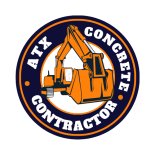Introduction
When it comes to revamping your concrete surfaces, two popular options are concrete resurfacing and concrete overlay. Both techniques can breathe new life into worn-out or dull concrete areas, but they have distinct differences in terms of application, durability, and aesthetics. Understanding these differences is crucial to making the right choice for your specific needs.
Benefits of Concrete Resurfacing
Benefits of Concrete Overlay
Key Differences Between Concrete Resurfacing and Overlay
FAQs
Conclusion
Benefits of Concrete Resurfacing
Concrete resurfacing is a cost-effective way to repair and enhance the appearance of your existing concrete surfaces. Here are some key benefits:
Enhances curb appeal
Repairs cracks and imperfections
Can be customized with various colors and patterns
Durable and long-lasting solution
Provides a fresh new look without the need for complete replacement
Benefits of Concrete Overlay
Concrete overlay involves adding a thin layer of a specialized mixture over existing concrete to create a fresh surface. Here are some advantages of choosing concrete overlay:
Transforms old concrete into a new, decorative surface
Offers versatility in design options
Can mimic the look of natural stone or tile
Resistant to stains and abrasions
Cost-effective compared to installing new flooring materials
Key Differences Between Concrete Resurfacing and Overlay
1. Thickness of Application
Concrete resurfacing typically involves applying a thicker layer of material compared to overlay. Resurfacing is suitable for repairing damaged surfaces and adding a new layer for aesthetics, while overlay is more about creating a decorative finish with minimal thickness.
2. Purpose of Application
Resurfacing is primarily used to restore the functionality of concrete surfaces by repairing cracks and imperfections. On the other hand, overlay focuses on enhancing the appearance of existing concrete without major structural changes.
3. Durability and Longevity
While both resurfacing and overlay can improve the durability of concrete surfaces, resurfacing tends to provide a thicker protective layer that can withstand heavy traffic and harsh weather conditions for an extended period.
4. Design Options
Concrete overlay offers more design flexibility in terms of texture, color, and patterns compared to resurfacing. If you are looking to achieve a specific decorative look, overlay might be the better choice for customization.
FAQs
What is the cost difference between concrete resurfacing and overlay?
The cost of concrete resurfacing and overlay can vary depending on factors such as surface condition, size, and design complexity. Generally, concrete overlay may be slightly more expensive due to the additional customization options available.
Which option is better for outdoor surfaces?
For outdoor surfaces exposed to heavy foot traffic or vehicle use, concrete resurfacing is often recommended due to its thicker application and enhanced durability. However, concrete overlay can also be suitable for outdoor areas with proper maintenance.
Conclusion
Choosing between concrete resurfacing and overlay ultimately depends on your specific goals and preferences. Whether you prioritize functionality, aesthetics, or cost-effectiveness, both methods offer unique benefits for revitalizing your concrete spaces. By understanding the differences outlined above, you can make an informed decision to transform your concrete surfaces with confidence.
